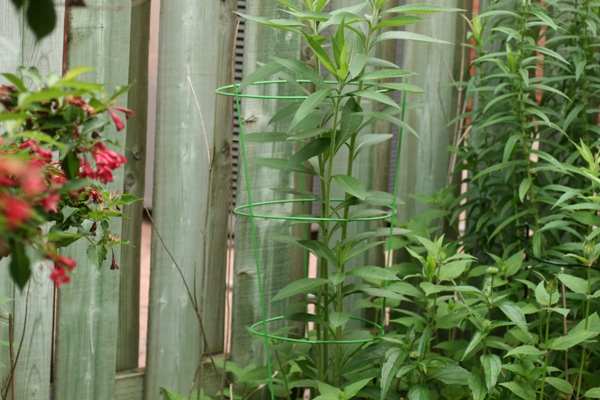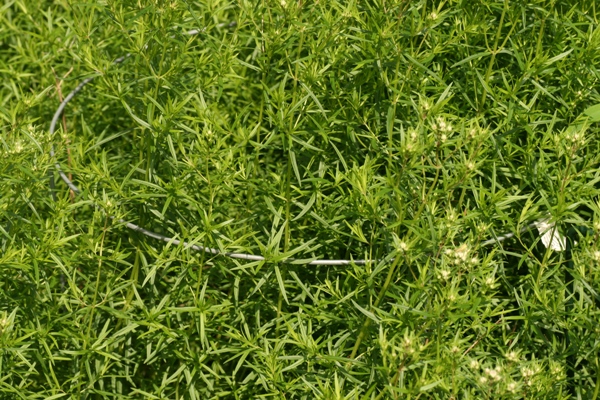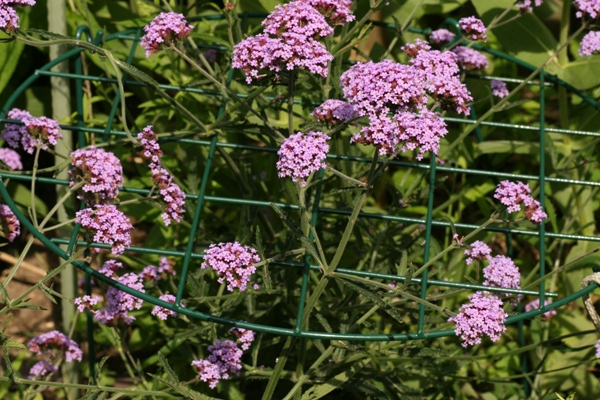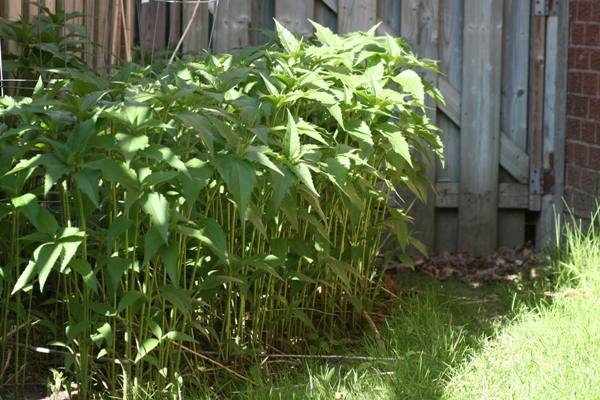Supports and barriers
Plants that grow more than 2 feet (60 cm) high will probably need support in a garden setting, especially in part sun conditions. Why? Well after the first big rainstorm your plants will be flattened and will not recover that season. Your plants will look awful. It may even prevent them from flowering properly. When a plant falls over, it may also fall onto other plants and damage them too. Investing some money into supports will greatly enhance the look of your garden. If you are thinking that supports look ugly and intrusive, I would agree. However, your garden will look a lot worse without them and there are things you can do to make supports less obvious. Various devices can be used to provide support depending on the height of the plant and their position in the garden. While box stores sell supports in all fancy colours, you will find them less noticeable if you stick to the green and brown colours.
| |
 |
|
| |
In this case, a cage is an appropriate support, because the plant is tall and will always have some support. The stems are strong enough that they will not break within the cage. |
|
A single cane is the worst support that you can provide for a plant unless the plant is young and has only one stalk. An older plant will have to be affixed to the cane using string and its growth habit will look rather awkward.
Tomato cages can work quite well for native plants. They must be placed over the plant when it is a few inches high. Choose a cage size that is a bit smaller than the plant itself and place the cage so that the front of the plant will grow around it thereby making it less visible. I would recommend a cage whenever the plant has a dense growth habit that prevents flopping within the cage itself.
| |
 |
|
| |
By the time these Pycnanthemum tenuifolium have reached their maximum height, the cage that supports them will be completely hidden. |
|
A horizontal trellis works on most plants and is particularly useful when the growth habit is not dense. The trellis will support each stem individually. A horizontal trellis is more difficult to use properly than a cage because it has to be placed at the right height. In order to support the stems properly, the trellis must be somewhere between half and two thirds of maximum height of the plant. If the trellis is too high, the stems may flop over before reaching the trellis. If the trellis is too low, the stems flop over after growing through the trellis. With tall plants, I often combine a low trellis for the plant in the early stages of growth with something else to support the plant in the later stages of growth. The trellis must be in place before the stems reach it so that the plant grows naturally through the trellis.
| |
 |
|
| |
Since the plant does not have a dense habit, it is possible for the plant to flop within a cage. A horizontal trellis supports individual stems. If you want something on a larger scale, you can use chain link fencing. |
|
Some supports can be joined together to make a cage that fits the size of the plant. The increase in versatility is matched by an increase in cost.
A series of canes connected with string can be used to support a large mass of tall plants. Your tall plants are best planted behind other plants anyway so the canes will be barely noticeable. Place the canes close enough to the plant stems so that the leafy growth will make the supports more obscure.
Barriers are useful for plants that are known to spread out of control using stolons or rhizomes. I find plants with rhizomes such as sunflower more difficult to deal with because the rhizomes have to be dug out whereas stolons can often be pulled. Barriers can easily be made by taking large plastic pots and cutting off the bottom. Since barriers do not usually have to go more than 8 inches into the ground, any large pot will do the trick. Commercial barriers involve plastic pieces that fit together and they can be made to go in any direction. Since barriers cut down work involved in the control of spreading plants by about 90% and do so year in year out, they should be considered in smaller gardens where room is limited.
| |
 |
|
| |
Sunflowers are known for spreading using fleshy rhizomes. Here they have been mostly contained within the bedding area by a plastic barrier wall that is put into the soil. |
|



